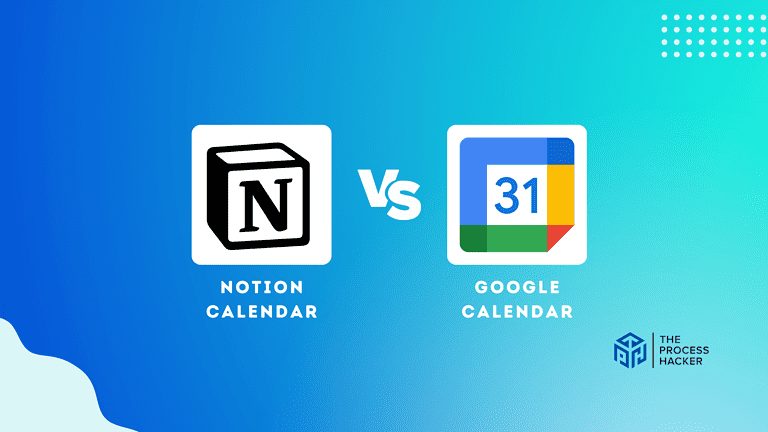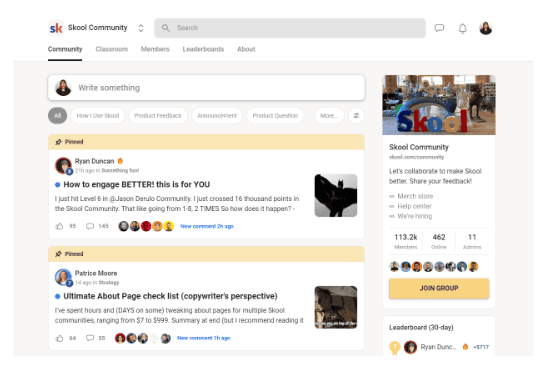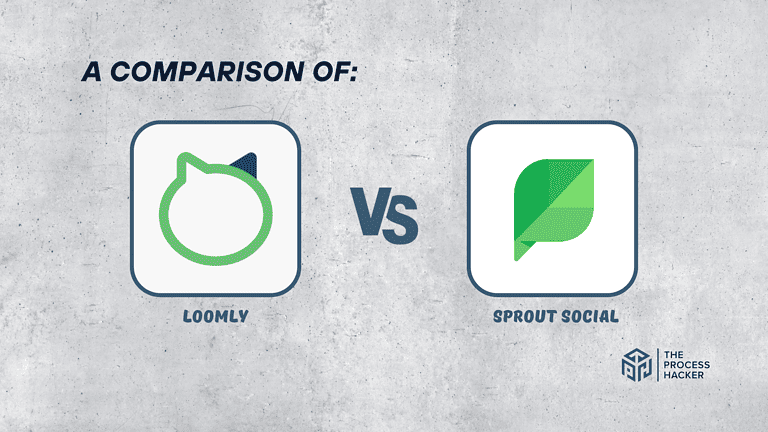How to Collect Customer Feedback to Improve Your Service
Your customers are the lifeblood of your operation. They’re not just numbers on a spreadsheet but real people with real opinions about your products or services. Their positive or negative feedback is the key to unlocking business growth, innovation, and success.
But how do you effectively collect customer feedback? How do you turn those valuable insights into actionable strategies that elevate your business? This comprehensive guide will break down the best practices for gathering customer feedback tailored explicitly for small businesses.
What is Customer Feedback Collection?
Customer feedback collection is a two-way conversation with your customers. It’s about actively seeking their thoughts, opinions, and experiences related to your business. It’s more than just listening – understanding their needs, wants, and pain points.
Gathering this valuable information gives you insight into what you’re doing well and where you can improve. It’s like having a direct line to your customers’ minds, helping you make informed decisions that lead to better products, services, and overall customer satisfaction.
Why You Should Know How to Collect Customer Feedback
Knowledge is power. And when it comes to customer feedback, that knowledge can be the difference between thriving and just surviving. Here’s why understanding how to collect customer feedback is crucial for your small business:
1) Improve your products and services
Think of customer feedback as a roadmap for improvement. It tells you what you’re doing well and where you need to focus your efforts. By listening to your customers, you can identify pain points, address issues, and develop solutions that meet their needs.
2) Enhance the customer experience
Happy customers are loyal customers. You show them that their opinions matter by actively seeking and acting on their feedback. This fosters a sense of trust and builds stronger relationships, leading to repeat business and positive word-of-mouth recommendations.
3) Gain a competitive edge
In today’s market, standing out is essential. You differentiate yourself from the competition by truly understanding your customers and consistently delivering exceptional experiences. This not only attracts new customers but also helps you retain existing ones.
4) Drive innovation and growth
Customer feedback can spark new ideas and inspire innovation. By tapping into your customers’ needs and desires, you can develop new products, services, or features that keep your business ahead of the curve and fuel its growth.
5) Make informed business decisions
Data-driven decisions are the backbone of successful businesses. Customer feedback provides valuable insights that help you make informed choices, from marketing strategies to pricing models.
How to Collect Customer Feedback Effectively
Collecting customer feedback helps an ongoing process that requires planning and strategy. It’s not enough to ask for feedback randomly; you need a structured approach to gather the correct information from the right people at the right time.
1. Develop a Customer Feedback Strategy
Before you start collecting feedback, it’s crucial to have a well-defined strategy in place. This ensures that your efforts are focused and aligned with your business goals. Here’s how to get started:
- Set clear objectives: What do you want to achieve with customer feedback? Are you looking to improve specific products or services, enhance the overall customer experience, or gain insights into customer preferences? Define your objectives to guide your feedback collection efforts.
- Identify your target audience. Who are you trying to reach? Are you interested in feedback from all customers or specific segments, such as new customers, repeat customers, or recently churned customers?
- Choose the right channels: There are various ways to collect customer feedback, including surveys, online reviews, social media, customer interviews, and more. Select the most relevant channels to your target audience and business objectives.
- Determine the frequency: How often will you collect feedback? Will you conduct regular surveys, monitor online reviews continuously, or schedule periodic customer interviews? Consider your resources and the nature of your business to determine the appropriate frequency.
- Assign responsibilities: Who will collect, analyze, and act on customer feedback? Make sure roles and responsibilities are clearly defined to ensure accountability and follow-through.
Developing a comprehensive customer feedback strategy lays the groundwork for successful feedback collection efforts. This structured approach ensures that your efforts are purposeful, targeted, and aligned with your business goals.
2. Implement Various Feedback Collection Methods
Once you have a solid strategy in place, it’s time to start collecting feedback. Remember, there’s no one-size-fits-all approach. The key is using various methods to reach customers and gather diverse perspectives. Here are some effective feedback collection methods to consider:
Surveys
Surveys are versatile tools for collecting quantitative and qualitative feedback. They can be conducted online, via email, or in person. Keep surveys concise, focused, and easy to complete to encourage participation.
Online reviews
Monitor online review sites like Google My Business, Yelp, and industry-specific platforms. Respond to positive and negative reviews to show that you value customer feedback and are committed to providing excellent service.
Social media
Social media platforms are a great way to engage customers and gather real-time feedback. Monitor comments, mentions, and direct messages to stay on top of customer sentiment.
Customer interviews
Conduct one-on-one interviews with customers to gain in-depth insights into their experiences and expectations. This qualitative approach allows for open-ended conversations and deeper exploration of customer needs.
Feedback forms and suggestion boxes
Place feedback forms or suggestion boxes in your physical store or website. This provides an easy and accessible way for customers to share their thoughts and suggestions.
Post-purchase follow-ups
After customers make a purchase, contact them to thank them for their business and ask for feedback on their experience. This shows you care about their satisfaction and are committed to continuous improvement.
Remember, choosing methods relevant to your target audience and business objectives is key. Don’t be afraid to experiment with different approaches to see what works best for you. The more diverse your feedback collection methods, the richer and more insightful the data you’ll gather.
3. Create Effective Feedback Forms
Feedback forms are a powerful tool for gathering structured customer feedback. However, not all forms are created equal.
No one wants to spend hours filling out a lengthy form. Keep your questions focused and to the point. Aim for a form that can be completed in a few minutes.
Avoid jargon and technical terms your customers may not understand. Use clear, straightforward language to ensure everyone can easily understand and answer your questions.
While multiple-choice questions can help gather quantitative data, open-ended questions allow for more in-depth and nuanced feedback. Encourage customers to share their thoughts and experiences in their own words.
Consider offering a small incentive, such as a discount or a freebie, to encourage customers to complete your feedback form. This can boost participation and show your appreciation for their time.
Place your feedback form in a prominent location on your website or in your physical store. Ensure it’s mobile-friendly and easy to navigate on any device.
Feel free to experiment with different question formats, layouts, and incentives to see what works best for your audience.
Based on customer feedback and response rates, regularly review and refine your forms. Remember, your feedback form represents your brand. Ensure it’s professional, user-friendly, and reflects your commitment to listening to your customers. By creating effective feedback forms, you’ll gather valuable insights that can help you improve your business and exceed customer expectations.
4. Leverage Social Media for Real-Time Feedback
Social media is more than just a platform for sharing photos and updates. It’s a powerful tool for connecting with unhappy customers and gathering valuable feedback in real-time. Here’s how to make the most of social media for feedback collection:
- Monitor your channels: Monitor your social media channels closely, including comments, mentions, and direct messages. Respond promptly to positive and negative feedback to show you’re engaged and attentive.
- Ask questions and run polls: Use social media to solicit feedback from your followers actively. Ask questions about their experiences, preferences, or suggestions for improvement. Run polls to gather quick insights on specific topics.
- Use social listening tools: Various social listening tools are available that can help you track mentions of your brand, products, or services across multiple social media platforms. This lets you stay on top of customer sentiment and identify potential issues before they escalate.
- Engage in conversations: Participate in relevant discussions related to your industry or niche. This will help you build relationships with potential customers and gather insights into their needs and expectations.
- Run contests and giveaways: Encourage customers to share feedback by running contests or giveaways on social media. This can generate excitement and boost engagement while providing valuable insights.
Remember, social media is a two-way street. It’s not just about broadcasting your message; it’s about listening and engaging with your audience. By actively participating in social media conversations and using the platform to gather feedback, you can build a loyal community of customers who feel heard and valued.
5. Implement In-App and Website Feedback Tools
It is key to make feedback collection as seamless as possible. Integrating feedback tools directly into your app or website allows customers to share their thoughts without leaving the platform they already use. This convenience can significantly boost participation and provide valuable insights into their real-time experience.
Here are some ways to implement feedback tools effectively:
Embedded feedback widgets
These unobtrusive tools, often appearing as small buttons or tabs, can be strategically placed throughout your app or website. Customers can click on them to leave feedback or report issues without disrupting their workflow.
Post-interaction surveys
Trigger short surveys after key interactions, such as completing a purchase or contacting customer support. This captures actionable feedback while the experience remains fresh in the customer’s mind.
Net Promoter Score (NPS) surveys
These simple surveys ask customers how likely they are to recommend your product or service to others. They provide a quick gauge of overall customer satisfaction score and loyalty.
User experience (UX) testing tools
Employ tools that track user behavior and identify pain points within your app or website. This helps you understand how customers interact with your platform and pinpoint areas for improvement.
Remember to choose tools that align with your brand’s aesthetic and are easy for customers to use.
Make sure they are mobile-friendly and accessible on all devices. Integrating feedback tools directly into your app or website makes it effortless for customers to share their thoughts and helps you create a more user-friendly experience.
6. Conduct Regular Customer Interviews
While surveys and online feedback tools offer valuable insights, nothing quite like a face-to-face conversation to truly understand your customers.
Regular customer interviews allow you to delve deeper into their experiences, motivations, and expectations.
They provide a platform for open dialogue and can uncover nuances that other feedback collection methods might miss.
Here’s how to make the most of customer interviews:
- Select the right participants: Choose customers who represent different segments of your target audience. This could include new customers, long-term customers, and those who have recently churned. Aim for a diverse group to gain a well-rounded perspective.
- Prepare a structured interview guide: Develop a list of open-ended questions that focus on key areas of interest, such as the customer’s experience with your product or service, pain points, expectations, and overall satisfaction.
- Create a comfortable environment: Conduct interviews in a relaxed and welcoming setting, whether in person, over the phone, or via video call. Make sure the customer feels comfortable sharing their honest thoughts and opinions.
- Actively listen and probe: Pay close attention to the customer’s responses and ask follow-up questions to gain deeper insights. Show genuine interest in their feedback and avoid interrupting or judging their opinions.
- Record and analyze the interviews: Take notes or record the interviews to ensure you capture all the key points. Analyze the feedback to identify common themes, pain points, and opportunities for improvement.
Customer interviews provide a wealth of qualitative data that can inform your business decisions and drive meaningful change.
By making them a regular part of your feedback collection strategy, you demonstrate a commitment to understanding your customers deeper and building lasting relationships.
7. Analyze and Act on Feedback Data
Collecting customer feedback is just the first step. To truly leverage its power, you need to analyze the data and translate it into actionable insights.
This involves identifying trends, sharing information across your organization, and implementing changes that address customer needs and expectations.
Here’s a breakdown of the customer feedback process:
Step 1: Use analytics tools to identify trends and patterns
If you’re collecting feedback through surveys or online tools, leverage analytics features to identify common themes, pain points, and areas of satisfaction. Look for trends over time to track progress and identify emerging issues.
Step 2: Share insights across departments
Customer feedback is relevant to more than just your ways to improve customer service or marketing metrics for teams. Share key insights with all departments to foster a customer-centric culture and ensure everyone is aligned to meet customer needs.
Step 3: Develop action plans based on feedback
Once you’ve identified key areas for improvement, create actionable plans to address them. This could involve product or service enhancements, refining customer support processes, or developing new marketing strategies.
Step 4: Communicate changes and improvements to customers
When you make changes based on customer feedback, let your customers know! This demonstrates that you’re listening to their concerns and taking action to improve their experience. It’s a great way to build trust and customer loyalty.
Key Considerations for Successfully Collecting Customer Feedback
While the steps outlined above provide a solid framework for collecting customer feedback, some additional factors must be considered to ensure the success of your efforts.
- Timing is everything: Consider the customer’s journey and choose the right moments to ask for feedback. For example, requesting feedback immediately after a purchase or support interaction can capture valuable insights while the experience remains fresh in the customer’s mind.
- Keep it short and sweet: People are busy. Respect their time by keeping your feedback requests concise and to the point. Avoid lengthy surveys or complex forms that might deter participation.
- Make it personal: Address customers by name and personalize feedback and feature requests whenever possible. This shows you value their opinions and creates a more engaging experience.
- Offer multiple feedback channels: Some people prefer different communication methods. To cater to different preferences, provide a variety of feedback channels, such as online surveys, email, social media, or even in-person opportunities.
- Show appreciation: Always thank customers for taking the time to provide feedback. A simple gesture of gratitude goes a long way in building goodwill and fostering positive relationships.
- Close the loop: Don’t just collect feedback – act on it! Let customers know that their opinions are being heard and that you’re taking steps to address their concerns. This builds trust and encourages future participation.
- Be transparent: If you’re making changes based on customer feedback, be transparent. Share updates on your progress and let customers know how their input shapes your business.
Following these best practices and avoiding common pitfalls can create a customer feedback program that delivers valuable insights, strengthens customer relationships, and drives business growth.
Remember, the key is to be proactive, consistent, and genuinely committed to listening to your customers.
Taking it to the Next Level: Check Out SurveySparrow
If you’re looking for a powerful and user-friendly platform to streamline your customer feedback collection efforts, SurveySparrow is worth exploring. This versatile tool offers a range of features to help you create engaging surveys, collect feedback across multiple channels, and easily analyze data.
With SurveySparrow, you can:
- Design beautiful surveys: Create visually appealing and interactive surveys that capture your brand’s personality and resonate with your audience.
- Collect feedback across multiple channels: Reach customers wherever they are with SurveySparrow’s multi-channel capabilities. Embed surveys on your website, shared via email or social media, or even conducted offline surveys.
- Cross-product AI: SurveySparrow’s ‘AI Wings’ features simplify the process of feedback management in many ways, including – survey creation, question rephrasing, data visualization, and response generation.
- Visualize data in real-time: SurveySparrow’s powerful analytics dashboard gives instant insights into customer sentiment. Track response rates, identify trends, and generate reports to share with your team.
- Analyze feedback with AI: Unearth hidden insights from unstructured text feedback with CogniVue, SurveySparrow’s advanced text analytics model. Understand exactly what customers love and don’t love about your brand, along with insights on the issues to resolve.
- Automate workflows: Streamline your feedback collection process with SurveySparrow’s automation features. Trigger surveys based on specific events, send personalized follow-up emails, and close the feedback loop quickly.
- Ticket Management: Close the feedback loop and ensure service recovery. Convert feedback into tickets, assign them to the appropriate agent, and follow-up with customers.
- Reputation Management: Monitor and respond to customer reviews from over 100+ online review platforms, all in one place. Analyze reviews to identify customer sentiment and key aspects of your business that customers mention. Build your brand’s reputation and earn customer trust.
- Integrate with your favorite tools: Seamlessly connect SurveySparrow with your CRM, marketing automation platform, and other essential business tools to centralize your customer data and gain a holistic audience view.
Whether you’re a small business just starting out or an established enterprise looking to elevate your feedback collection game, SurveySparrow offers a comprehensive solution that can help you gather valuable insights, improve customer satisfaction, and drive business growth.
Regarding pricing, SurveySparrow offers accessible plans to accommodate your business at each stage of its growth. The most affordable plan starts from $19 a month, billed annually. If you’d like to explore all the features of the platform, SurveySparrow offers a 14-day free trial, for which you can sign up here.
Alternatives to Traditional Customer Feedback Collection
While surveys, interviews, and social media are valuable tools, a world of innovative and creative approaches can add depth and dimension to your feedback collection strategy. These alternative methods can help you uncover unique insights and engage customers more interactively.
Mystery shopping programs
Employ trained individuals to act as regular customers and evaluate their experience with your business. This provides an objective view of how to improve customer service, product quality, and overall brand experience.
Customer advisory boards
Invite a select group of loyal customers to participate in a formal advisory board. This will allow you to gain in-depth feedback on strategic initiatives, new product development, and overall customer satisfaction.
Predictive analytics and AI-driven insights
Leverage advanced analytics and AI technologies to analyze customer behavior, preferences, and feedback patterns. This helps you anticipate customer needs, personalize experiences, and proactively address potential issues.
Employee feedback on customer interactions
Your employees interact with customers daily and can provide valuable insights into their needs and pain points. Encourage open communication and create a system for employees to share customer feedback with management.
The key is to be creative, experiment with different approaches, and find the methods that resonate most with your audience. By incorporating these alternative methods into your strategy, you can gather a richer, more holistic view of customer sentiment and uncover hidden opportunities for innovation and growth.
Measuring the Success of Your Customer Feedback Program
While you can certainly gather and analyze customer feedback manually, leveraging the right tools and software can significantly streamline the process and unlock deeper insights.
Tools and Software for Efficient Customer Feedback Management
The specific tools you choose will depend on your business needs, budget, and technical expertise. However, investing in the right software can save you time, improve data accuracy, and empower you to make more informed decisions based on customer feedback.
Here are some categories of tools that can empower you to manage customer success feedback effectively:
- Customer feedback survey tools (e.g., SurveyMonkey, Typeform): These platforms simplify surveys’ creation, distribution, and analysis. They offer a variety of question types, customizable templates, and real-time reporting features.
- Customer experience platforms (e.g., Qualtrics, Medallia): These comprehensive solutions enable you to collect feedback across multiple channels, analyze data in real time, and track key metrics like CSAT, NPS, and CES.
- Social listening tools (e.g., Hootsuite, Sprout Social): These tools monitor social media conversations and mentions of your brand, providing valuable insights into customer sentiment and emerging trends.
- Analytics and reporting software: These tools help you analyze feedback data from various sources, identify trends and patterns, and generate insightful reports to share with your team.
Overcoming Common Challenges in Customer Feedback Collection
While collecting customer feedback is crucial for any business, it can be a challenging journey. Several challenges can arise, but with the right approach, they can be overcome. Let’s explore some common obstacles and their solutions:
- Low response rates: If you’re having trouble getting customers to participate in surveys or feedback forms, consider offering incentives, personalizing your requests, and ensuring the process is quick and easy.
- Biased feedback: Sometimes, feedback can be skewed towards extreme opinions. Collect feedback from a diverse range of customers and use multiple collection methods to get a more balanced view.
- Actionable insights: Sifting through large amounts of feedback data can be overwhelming. Use analytics tools to identify key trends and focus on actionable insights that can drive real change.
- Closing the loop: It’s essential to let customers know that their feedback has been heard and is being acted upon. Communicate any changes or improvements that result from their input.
By proactively addressing these challenges, you can create a feedback collection process that is effective, insightful, and ultimately beneficial for both your business and your customers.
Case Studies: Small Businesses that Transformed Their Service Through Customer Feedback
Real-world examples often serve as the best inspiration. Let’s explore how two well-known companies leveraged customer journey feedback to elevate their service and achieve remarkable success:
LEGO
In the early 2000s, the LEGO Group faced declining sales and a disconnect from its core audience.
To address these challenges, the company turned to its customers for answers, actively seeking feedback from customers through surveys, online communities, and even inviting children to participate in product development workshops.
This customer-centric approach led to creating new product lines, like LEGO Friends, that resonated with a wider audience and sparked a resurgence in the company’s popularity.
Netflix
Netflix revolutionized the entertainment industry by constantly adapting to customer preferences.
They utilize vast amounts of data on viewing habits, ratings, and even pauses and rewinds to understand what their subscribers enjoy.
This information feeds into their recommendation algorithms and influences their content creation decisions, leading to a personalized experience that keeps users engaged and coming back for more.
These examples showcase how even large, established companies can benefit from actively listening to their customers. By making feedback an integral part of their business strategy, these organizations were able to identify opportunities for improvement, innovate their offerings, and create experiences that truly resonate with their audience.
Future Trends in Customer Feedback Collection
As technology continues to evolve, so will the methods we use to collect and analyze customer feedback. Here’s a glimpse into some emerging trends that are poised to shape the future of feedback collection:
- AI-Powered Sentiment Analysis: Artificial intelligence is becoming increasingly sophisticated in understanding human language and emotions. AI-powered sentiment analysis tools can automatically analyze customer feedback from various sources, identifying key themes and trends and even predicting future customer behavior.
- Voice-Activated Feedback: With the rise of voice assistants like Siri and Alexa, we can expect more voice-activated feedback collection methods. This allows customers to share their thoughts hands-free, providing a convenient and accessible way to gather feedback.
- Video Feedback: Video feedback offers a more personal and engaging way for customers to express their opinions. This can be particularly useful for gathering in-depth qualitative feedback and understanding the nuances of customer experiences.
- Omnichannel Feedback Collection: As customers interact with businesses across multiple channels, gathering feedback seamlessly across all touchpoints is essential. Omnichannel feedback collection tools allow you to track customer interactions and gather feedback from various sources, providing a holistic view of the customer experience.
These are just a few of the exciting trends that are shaping the future of customer feedback collection. By staying abreast of these developments and embracing new technologies, you can ensure your feedback program remains innovative, effective, and customer-centric.
Ethical Considerations in Gathering and Using Customer Data
While it is valuable to gather customer feedback, doing so ethically and responsibly is crucial. Customers entrust you with their personal information and opinions, and it’s your responsibility to handle this data with care. Here are some key ethical considerations:
- Transparency: Be upfront with customers about how their data will be collected, stored, and used. Obtain their consent before collecting any personally identifiable information (PII).
- Data Security: Implement robust security measures to protect customer data from unauthorized access, breaches, or misuse. Regularly update your security protocols and educate your support team on data protection best practices.
- Anonymity and Confidentiality: If customers prefer, they can provide feedback anonymously. Respect their privacy and keep their personal information confidential.
- Data Minimization: Collect only the necessary data for your feedback program. Avoid collecting excessive or irrelevant information.
- Ethical Use of Data: Use customer data solely for the purposes outlined in your privacy policy. Avoid selling or sharing customer data with third parties without their explicit consent.
Adhering to these ethical principles can build trust with your customers and demonstrate your commitment to protecting their privacy. This fosters stronger relationships and encourages ongoing participation in your feedback program.
Final Thoughts on Collecting Customer Feedback
Collecting customer feedback is an ongoing commitment, not a one-off task. It’s about fostering an open dialogue with your customers, demonstrating that their opinions matter, and using their insights to create exceptional experiences.
There you go. That’s everything you need to know about what makes customer feedback important; you’ll cultivate a loyal customer base and pave the way for lasting success in today’s competitive landscape.







